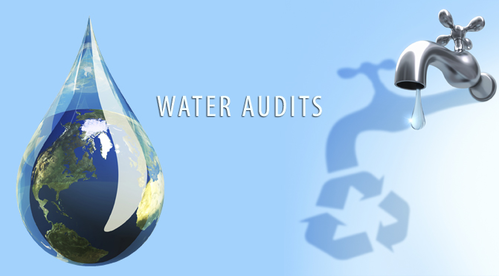WATER AUDIT
Water Audit is a qualitative and quantitative analysis of water consumption to identify means of Reducing, Reusing & Recycling of water.
- Water Audit is a full analysis of water processed by a utility. Water audit comprises of preparation of layout of water sources, distribution network, service/delivery points to water users and return flow of waste or excess water.
- Water audit is an effective management tool for minimizing losses, optimizing various uses and thus enabling considerable conservation of water
- Water audits trace water use from its point of entry into the facility/system to its discharge into the sewer/river/canal etc.

Benefits of Water Audit
- Water audit improves the knowledge and documentation of the distribution system,
- Identifies the problem and risk areas and a better understanding of what is happening to the water after it leaves the source point.
- Leads to reduced water losses,
- Improved financial performance,
- Improved reliability of supply system
- Efficient use of existing supplies
- Better safeguard to public health and property and reduced legal liability,
- Reduced disruption, thereby improving level of service to customers.
- Large potential cost savings that can be achieved by water harvesting, through the recycling of water and the use of rain water.
Water Audit Process
Water Audit is a systematic process of objectively obtaining a water balance by measuring the flow of water from the site of water withdrawal or treatment through the water distribution system and into areas where it is used and finally discharged. The various steps followed during the course of a Detailed Water Audit are as follows:
- A Preliminary Water Survey (PWS)/reconnaissance surveys conducted before initiating the Detailed Water Audit (DWA). This helps in identifying specific areas to be included in Scope of Work.
- A last mile discipline approach is followed.
- State of the art instruments and portable water quality testing kits are used for measurement and monitoring.
- Water Mapping and comprehensive water balances.
- Water quality assessments.
- Recommendations and identification of strategies.
- Training programs organized for sensitizing the plant personnel, operators and employees raising awareness.